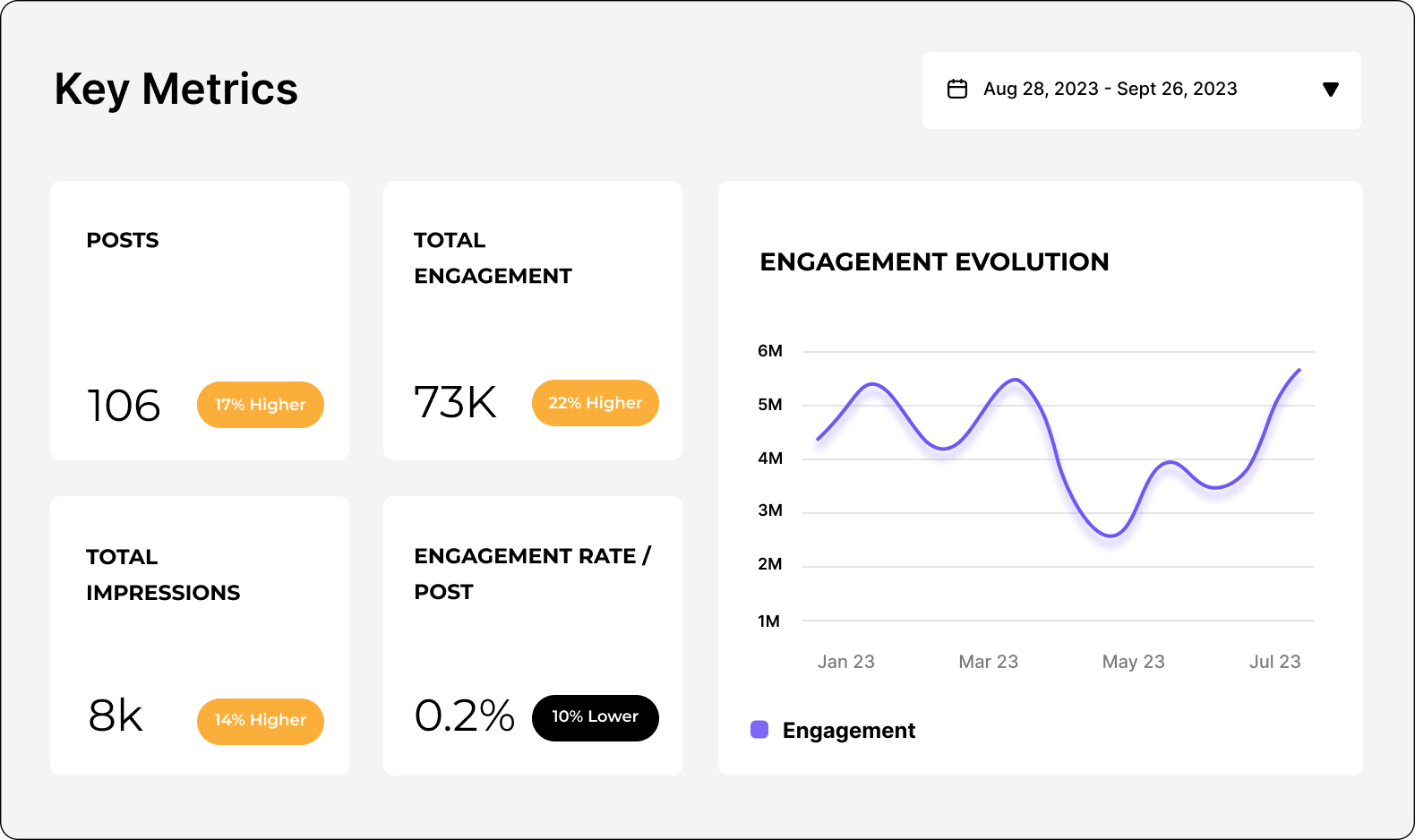FREE YouTube Audit
Insights that allow you to allocate time and budget more effectively

HBO
3.0M Subscribers Count




The Engagement Rate per Post (by subscribers) is the sum of likes and comments divided by the number of posts in the last 30 days, then divided by the number of subscribers. This result is multiplied by 100 to show the percentage.
Average Likes represents the total number of likes divided by the number of posts published in the last 30 days.
Average Comments represents the total number of comments divided by the number of posts published in the last 30 days.
Enter a YouTube handle to instantly see key metrics and analytics for that account.
Top Performing Posts
 HBO
HBO 


 HBO
HBO 


 HBO
HBO 


Analysis

Content

Average Posts/ Day: The average number of posts published per day over the last 30 days.

Engagement

Avg engagement: The average percentage of followers who engaged with each post over the last 30 days.
*This analysis only takes into consideration data for the last 30 days.
Want more historical data? Sign up for a FREE 14-day trial (no credit card required!) and get YouTube analytics for the last 12 months.
I want historical dataFREE Social Media Audit
How to analyze your YouTube performance with Socialinsider
Socialinsider’s social media analytics allow you to measure and compare social media performance against competitors and industry peers.

Start by creating a trial account

Connect the profiles you manage

Select the time frame you want to analyze

See your best-performing content types and themes

Analyze your YouTube performance
Easily analyze and track your YouTube metrics, conduct audits, and perform YouTube competitor analysis with Socialinsider.
FAQs about YouTube audit
Got a question? We've got answers.
Why isn’t my YouTube channel growing, and how can I audit my analytics to find what’s holding it back?
Look at your click-through rates on thumbnails and titles, since weak first impressions often limit discovery. Review publishing frequency and timing, even if you haven’t changed them, because shifts in audience behavior or YouTube’s algorithm can suddenly affect visibility. Dive into traffic sources as well—check whether your channel is relying too much on subscribers rather than surfacing in search, suggested, or browse features, which are critical for organic growth.
A social media analytics tool like Socialinsider can make this work easier and more insightful, presenting historical data in an accessible dashboard so you can visualize long-term trends and quickly compare your results to competitors. Additionally, by benchmarking performance, you can see if your channel’s growth pattern is unique or reflects industry-wide shifts.
How do I audit my niche and content topics to see if my channel is too broad or confusing the algorithm?
Go deeper by analyzing your traffic sources and suggested video performance. If your content isn’t showing up together in YouTube’s recommendations or if there’s little overlap in audiences across different videos, it’s often a sign that the algorithm struggles to categorize your channel. Consider whether your uploads jump between unrelated topics or styles—this variety may seem positive, but it can dilute your authority and make it harder for both the algorithm and viewers to understand your core value.
Additionally, a social media analytics tool like Socialinsider can help you segment and benchmark performance data by topic, making it clear which themes build loyal viewership and which create confusion or fail to attract repeat viewers.
How can I audit my upload consistency to understand whether irregular posting is hurting my channel’s performance?
How can I audit my Shorts vs. long-form strategy to see if Shorts are negatively affecting my channel?
Compare traffic sources for each format: if Shorts are generating most of their views from the Shorts feed but bringing minimal crossover to your main videos, they may be building an audience disconnected from your long-form content. Also, look at whether new subscribers gained from Shorts are sticking around for regular uploads, or if they largely stay disengaged. Patterns like declining performance, lower engagement rates, or reduced algorithmic placement of long-form videos after Shorts uploads are signs that your channel’s focus or algorithmic authority might be blurring.
Comparing your output with the strategies of similar successful channels lets you see if balanced approaches yield stronger, more sustainable growth. This deeper, segmented view reveals whether you should adjust your posting strategy, better connect Shorts viewers to your main library, or refine your overall channel focus so both formats drive engagement and growth without cannibalizing each other.
Ready to improve your social media strategy with real-time insights?
Get strategic insights, analyze the social performance across all channels, compare metrics from different periods and download reports in seconds.



